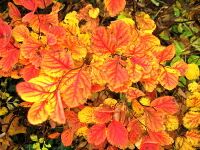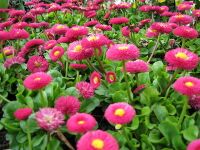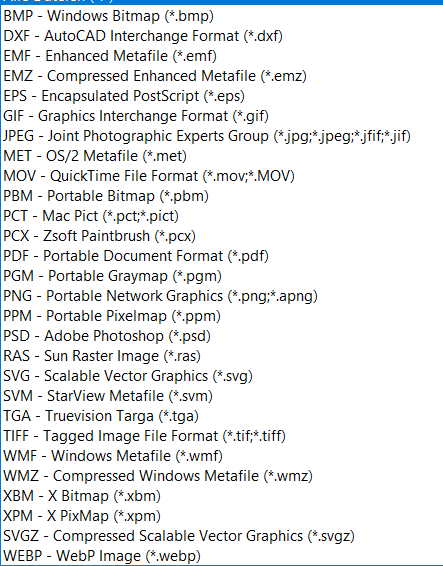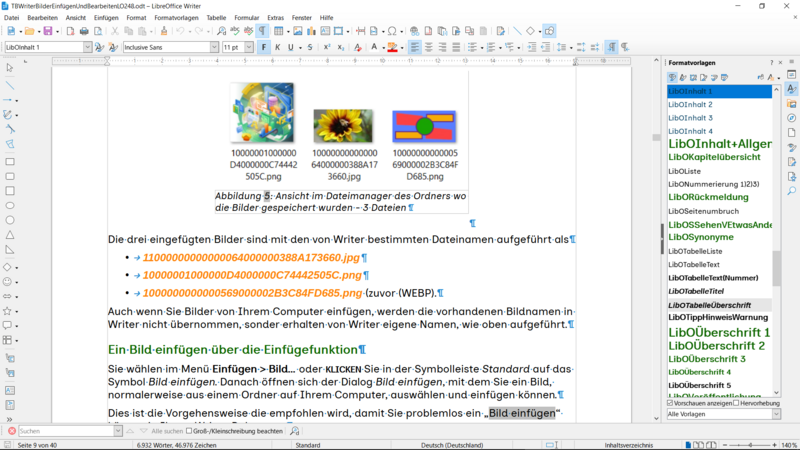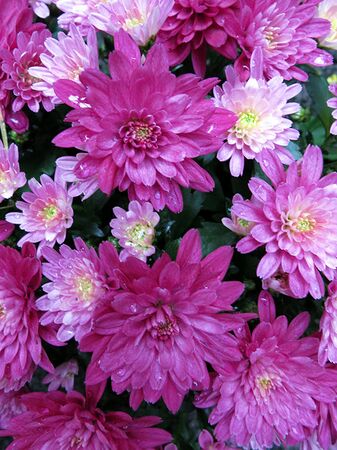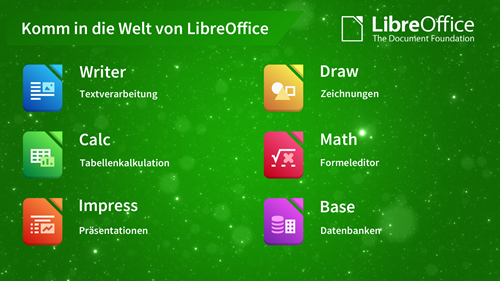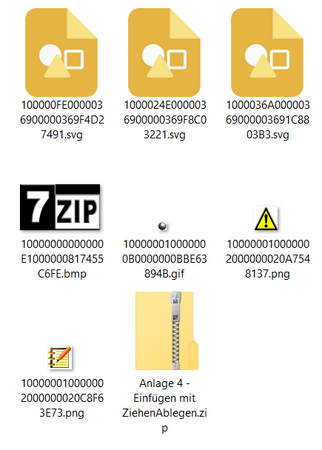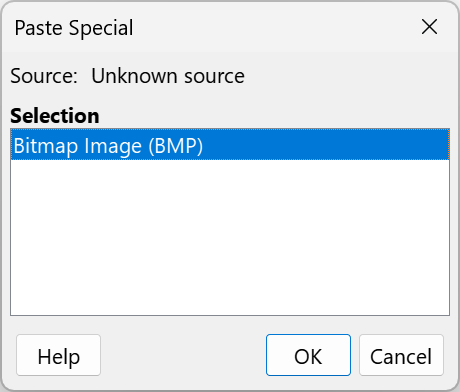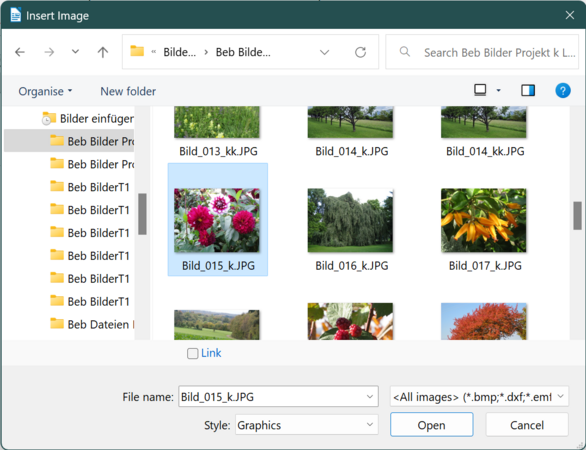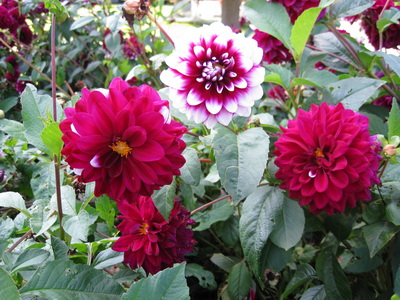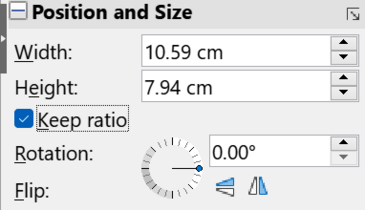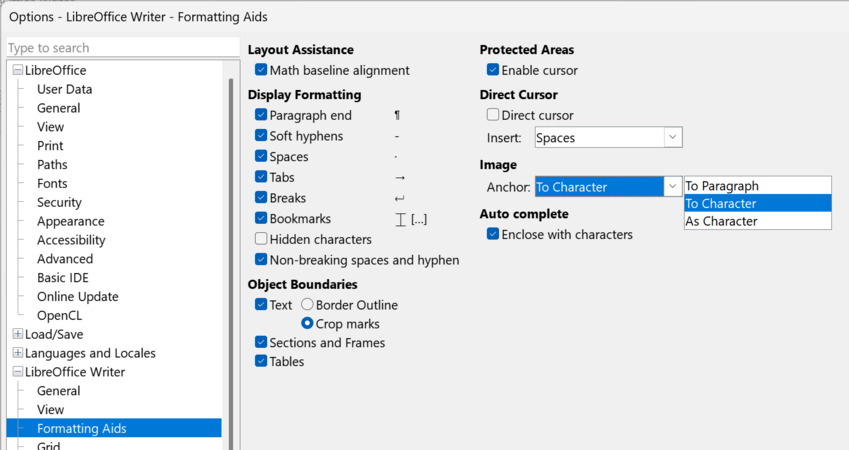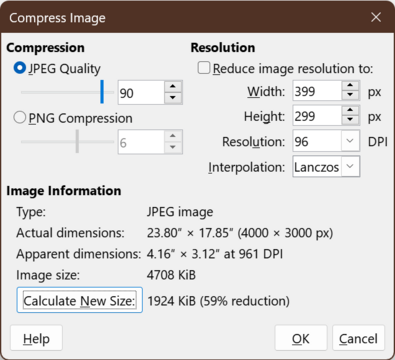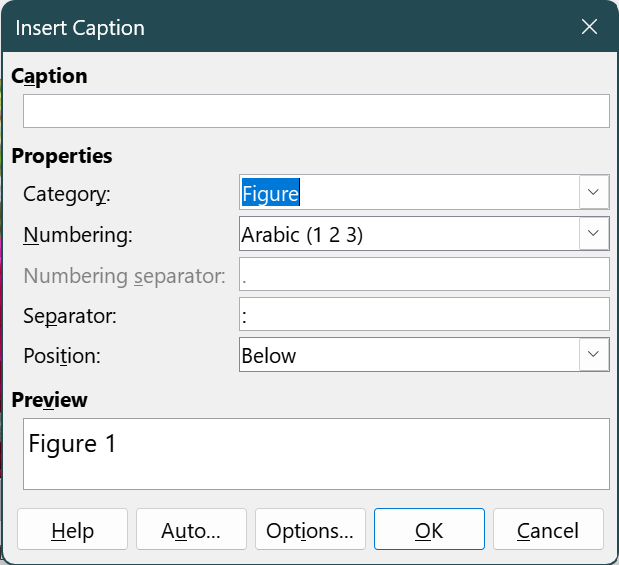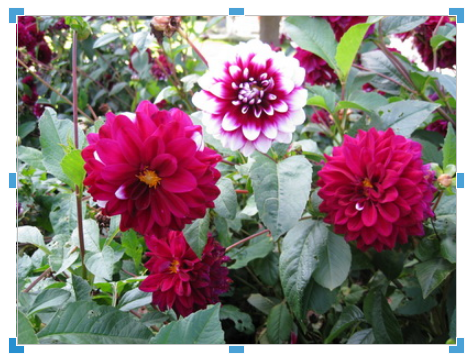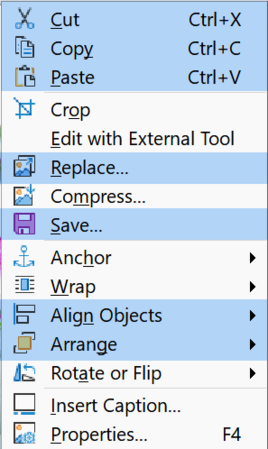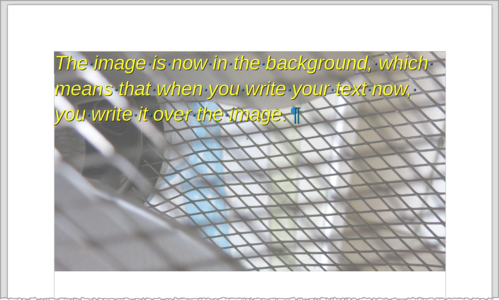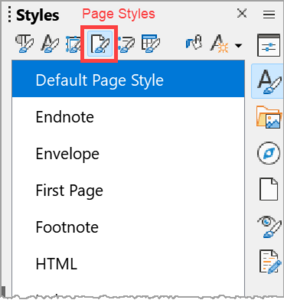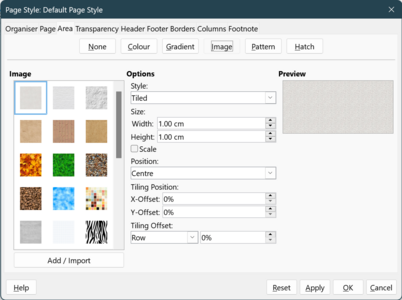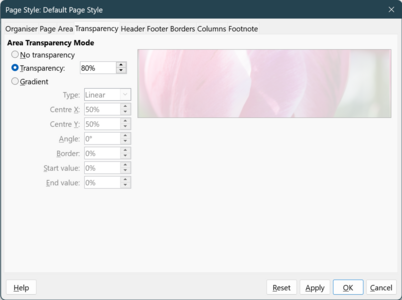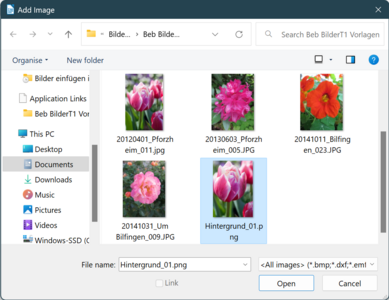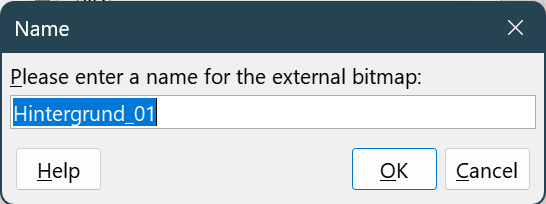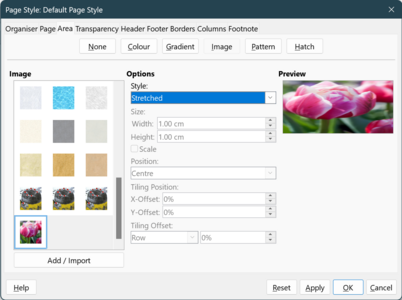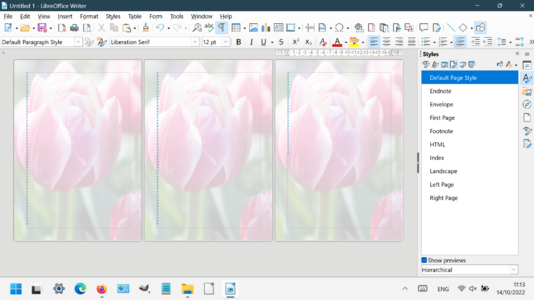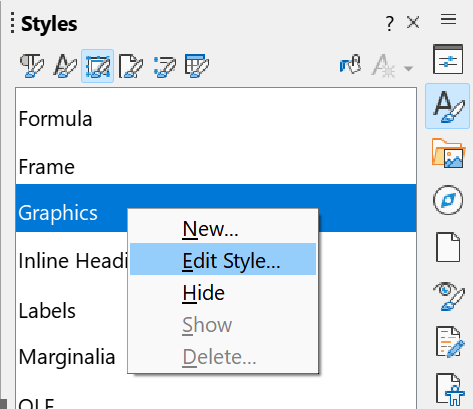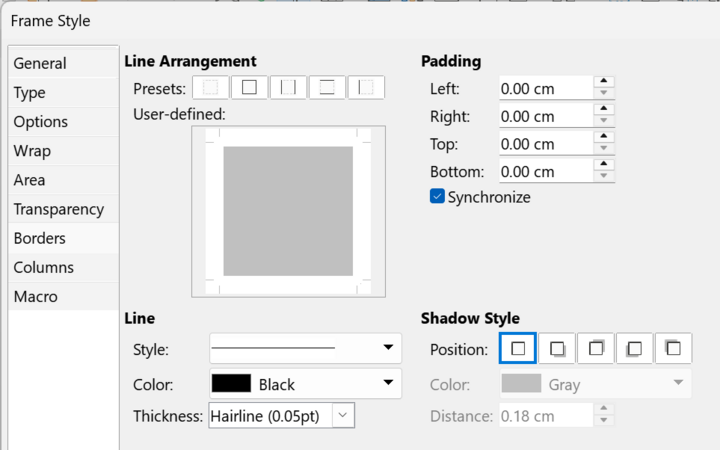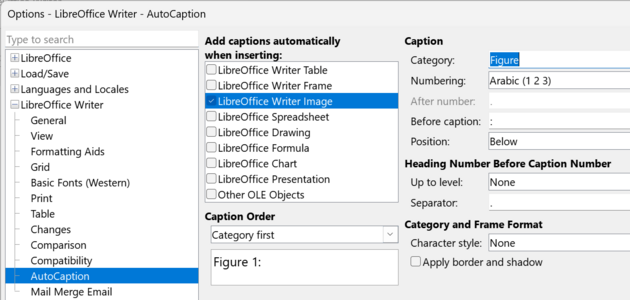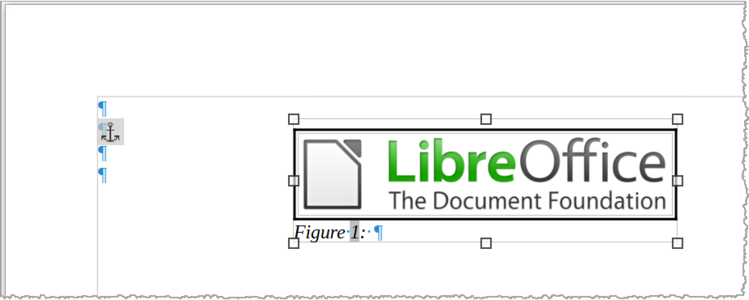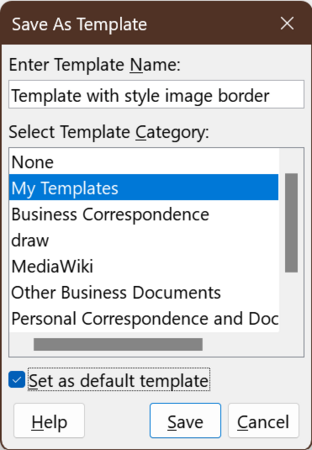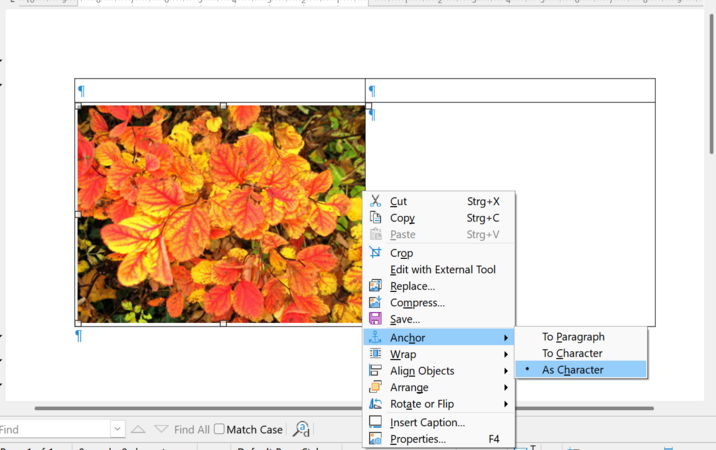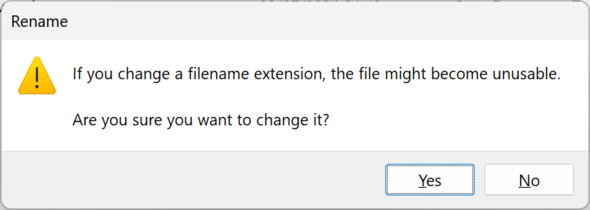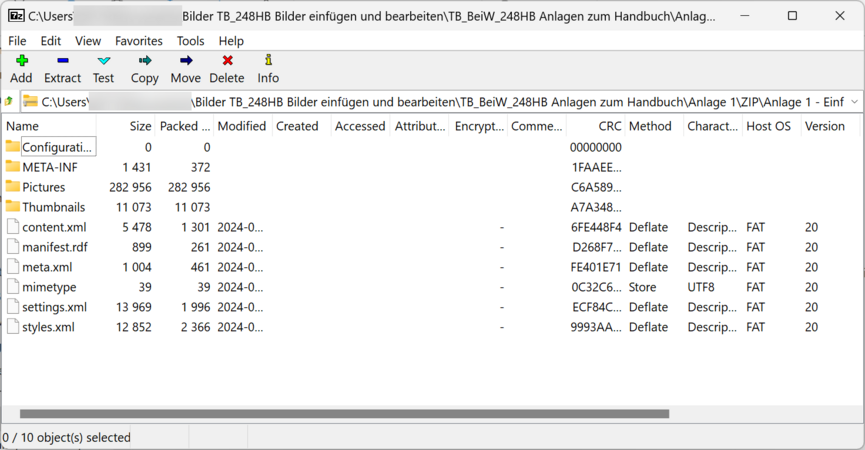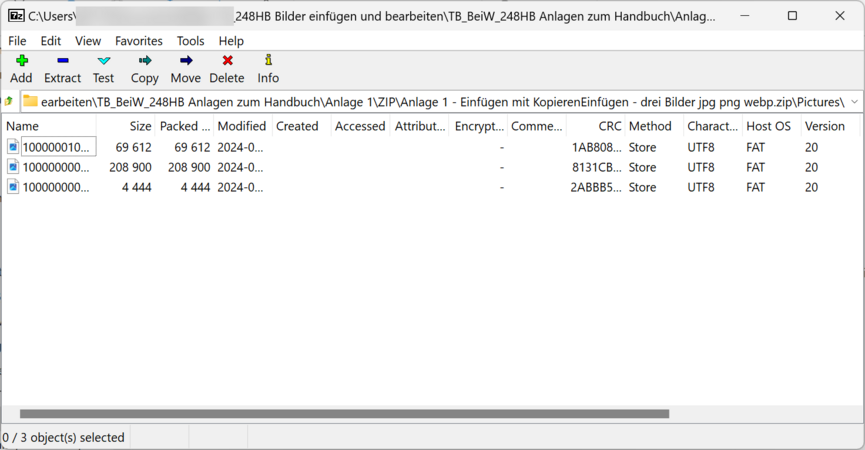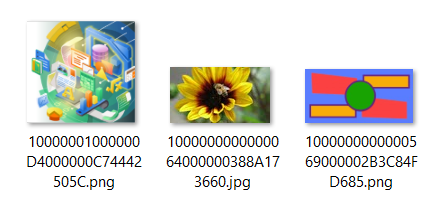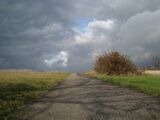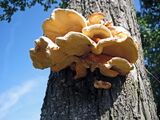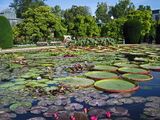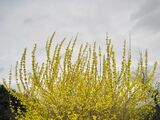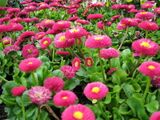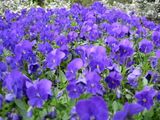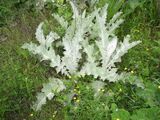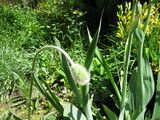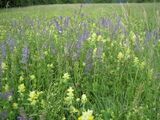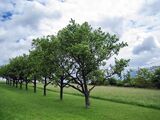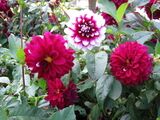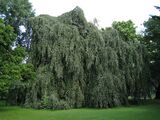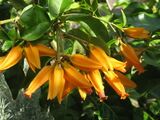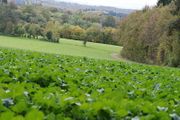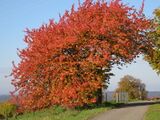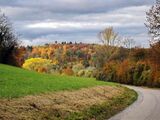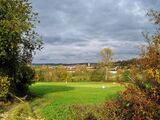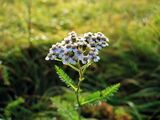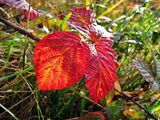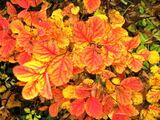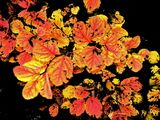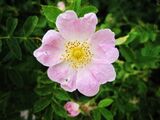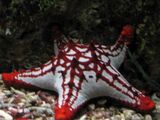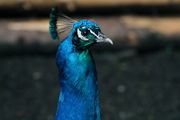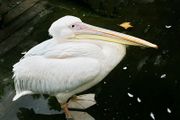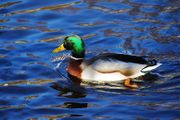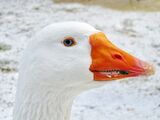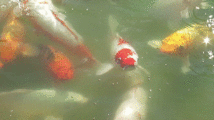Insert and edit images in Writer Part 1
TDF LibreOffice Document Liberation Project Community Blogs Weblate Nextcloud Redmine Ask LibreOffice Donate
This page is in work!
Foreword in part 1
Insert and edit images in Writer consists of 3 parts. The video "Insert and edit images in Writer - LibreOffice - Part 1" links to this page here, which contains further information. The term “images” is used here as a generic term. The most common uses for inserting images in LibreOffice are digital photographs, screenshots, and vector images.
The individual topics
| Topics related to inserting and editing images in Writer |
| Part 1 | Part 2 | Part 3 |
|---|---|---|
| Basics for inserting images | How to create a border | Insert images centered in the document |
| Insert images | Insert Images into table cells | Inserting a small icon or graphic into a sentence |
| Check the presets | Create Collages | Insert a full-page image on the first page of a document |
| Inserting an image into a Writer table | Cut an Image into a Shape | --- |
| Examine a document | --- | --- |
You can find more pictures at: Used images
-
Bild_025_k.JPG
-
Bild_015_k.JPG
-
Bild_017_k.JPG
-
Bild_027_k.JPG
-
Bild_007_k.JPG
Link to the Video
Link to the Video (in German [DE]): Bilder einfügen und bearbeiten in Writer - Teil 1
Basics for inserting images
File formats for insertion
Before inserting images, go to the ▸ menu. The menu item should be marked so that you can see the images after inserting them. If the menu item is not selected, you will only see a frame with a label such as ImageX after inserting, then you should click on the menu item so that the picture becomes visible. The menu item functions as a toggle switch.
Some file types can be opened in LibreOffice. To do this, select ▸ . The picture below contains a list of file types that can be opened or inserted into Writer.
-
File types that can be inserted into Writer
Here as a list: BMP, DXF, EMF, EMZ, EPS, GIF, JPEG (JPG, JFIF, JIF), MET, MOV, PBM, PCT, PCX, PDF, PGM, PNG, PPM, PSD, RAS, SVG, SVM, TGA, TIFF (TIF), WMF, WMZ, XBM, XPM, SVGZ, WEBP.
Reduce (resize) images before inserting
Digital photos are so-called raster images and are usually available as .jpg files. Screenshots are usually used as .png files.
The file extensions of vector graphics are usually assigned to proprietary programs. LibreOffice manages these images internally accordingly:
- Raster images as .jpg
- Screenshots as .png
- Vector graphics as .svg.
For example, a WEBP file inserted into Writer becomes a PNG file.
You can find out how to find out in which file format images are created in the Writer document in the section Analysing a document.
Screenshots
Screenshots are usually already the right size. For example, a screenshot of a full screen with a resolution of 1920x1080px is 379 kB and can be used as is.
-
Example: Screenshot Full screen 1920x1080px
Digital photos
Digital photos can be quite large in size, as modern digital cameras with full-frame sensors deliver these sizes. Therefore, digital photos should always be significantly reduced in size before being inserted into Writer. Although Writer offers some image editing functions, external programs should be used for this purpose. To reduce the size of multiple images at once, you can use the free program IrfanView, which also offers batch processing. In the example, you can see an image that previously had a size of 2.93 MB with 3000x4000px and has now been reduced to 144 kB with 500x667px. This image can still be used as a background image on a Writer page without becoming pixelated.
-
Example: Digital photo 144 kB with 500x667px
Graphic formats
Graphic formats can also become very large. For example, a PSD file (Adobe Photoshop document) has an original size of 5.81 MB with 1920 x 1080px. When inserted into a Writer document, this file, converted to a PNG file, is then around 1.157 MB. If you save this image from Photoshop as a PNG (1.13 MB), it should also be reduced in size afterwards. The image below now has 177 kB at 500 x 281px.
-
Example: Graphic format reduced to PNG with 177 kB at 500 x 281px
Insert an image using the insert function
Select ▸ from the menu or click on the "Insert Image" icon in the Standard toolbar. The "Insert Image" dialog will then open, allowing you to select and insert an image, usually from a folder on your computer. This is the recommended procedure so that you can easily insert an image in your Writer document. The respective image is then inserted in the format (JPG, PNG) in which it is available. An exception is a WEBP image that has been converted into a PNG.
Insert an image by "Copy&Past" or "Drag&Drop"
If you use this type of image insertion, the source from which the images are taken plays a major role. For example, if you copy images from the Internet, you should insert them using the ▸ ▸ menu. If you insert images directly, you must always be aware that you may introduce any unwanted formatting.
For the following four options, compare the procedure with Analysing a document.
- For attachment 2: The procedure for inserting an image using "Copy&Paste" and "Drag&Drop" results in the following behaviour. A test file "Anlage 2 - Einfügen mit KopierenEinfügen und ZiehenAblegen.zip" was also created for this example. When analysing two saved images from the ODT file, only one image of the two pasted images appears in the ZIP file, as it is the same image. It is present in the document with the file name "10000000000000E1000000817455C6FE.png", i.e. a PNG file.
- Regarding Appendix 3: If you use the "Copy&Paste" procedure to insert an image, you will receive a PNG file ("10000000000000E100000000817455C6FE.png").
- Regarding Attachment 4: If you use the "Drag&Drop method to insert an image, you will receive a BMP file. In relation to the test file "Anlage 4 - Einfügen mit ZiehenAblegen.zip", this is "10000000000000E1000000817455C6FE.bmp", Figure 5.
- Regarding Attachment 5: If you paste an image copied from the Internet using the ▸ ▸ menu, you will still receive a PNG file, Figure 6.
-
Figure 5 - bmp in File manager
-
Figure 6 - "Paste Special" dialog - choose Bitmap
The ODT documents (Appendix) Anlage 1 to 5 can be downloaded here: Anlagen zu Themenbücher (in German)
Inserting Images
Open Writer and the file "Lorem ipsum.odt" (File download from - Used working documents -).
Place the cursor somewhere in the middle of the text.
Now select the "Insert Image" icon ![]() in the Standard toolbar.
Alternatively you can use the ▸ menu.
In the dialog "Insert Image" select the image file "Bild_015k.JPG" and click .
The image is now displayed in the document.
in the Standard toolbar.
Alternatively you can use the ▸ menu.
In the dialog "Insert Image" select the image file "Bild_015k.JPG" and click .
The image is now displayed in the document.
-
"Insert Image" dialog
-
Bild_015k.JPG
- Used Pictures -
- What should I be aware of when inserting a picture? -
Image - Position and Size
In the sidebar under Properties, you can select "Position and Size" the "Height" and "Width" of the image. To ensure that the proportions are retained, place a check mark at "Keep Ratio". At "Width" enter 5.00 cm. The image is immediately adjusted in dimensions. The value for "Height" no longer needs to be entered, since you have set the check mark for "Keep Ratio". Left-click and hold the image and first drag it further down towards the center.
-
"Position and Size" the ″Height″ and "Width"
Set Wrap for the image
Right-click on the image to see the Context menu. In the Context menu, choose for the image ▸ off. Right-click on the image again and select , ( F4 ). In the "Image" dialog in the "Wrap" tab, enter 0.50 cm for each "Spacing" and click .
Set anchorage for the image
The important concepts of anchoring and positioning.
Left-click on the image and drag it further down towards the center.
Now right-click on the image.
In the context menu that appears, move the cursor to .
Another context menu shows the anchoring as .
If this is not the default setting, click on it.
Anchoring and effect
Green text from this LO-Online Help
Blue text from this OO-Source
Anchoring - To Page
Anchors the selected item to the current page.
A graphic anchored "To page" is forever associated with a particular page. It does not move as you add or delete text or other graphics. This method is useful when the graphic does not need to be visually associated with a particular piece of text. It is often used when producing newsletters or other documents that are very layout intensive.
Anchoring to the page is often used, for example, on page 1 of a book. The image then usually takes up the entire page.
Anchoring - To Paragraph
Anchors the selected item to the current paragraph.
The graphic is associated with a paragraph and moves with the paragraph. It may be placed in the margin or another location. This method is useful as an alternative to a table for placing icons beside paragraphs.
Anchoring - To Character
Anchors the selected item to a character.
The graphic is associated with a character but is not in the text sequence. It moves with the paragraph but may be placed in the margin or another location. This method is similar to anchoring to a paragraph but cannot be used with drawing objects.
Anchoring - As Character
Anchors the selected item as a character in the current text. If the height of the selected item is greater than the current font size, the height of the line containing the item is increased.
To centre an image on an HTML page, insert the image, anchor it "As character", then centre the paragraph.
The graphic is placed in the document like any other character and, therefore, affects the height of the text line and the line break. The graphic moves with the paragraph as you add or delete text before the paragraph. This method is useful for keeping screenshots in sequence in a procedure or for adding a small icon in sequence in a sentence.
Inserting images - different techniques
See on page: Inserting images in Writer Part 3
Presetting the anchorage - as of version 7.1
The anchoring for inserting images can be preset from LibreOffice version 7.1. Select ▸ ▸ ▸ from the menu. For "Image>Anchor" you can select: "To Pragraph", "To Character" or "As Character".
-
Preliminary setting "Anchor" in the "Options" Dialog
Move image with caption frame in text
If you insert a picture, it is treated as a frame ("Graphics" Frame style in the sidebar, Ctrl + F5). If you now add a caption, the image is given an outer caption frame ("Frame" Frame Style). You then have a frame within a frame. If you want to move the image to a different position, you must grab the outer caption frame and drag it (not the image). This also applies if you want to change the anchoring. The prerequisite is the anchorage "To Paragraph" or "To Character".
Compress the image
Compressing an image serves to reduce the file size. A file size of approx. 100 kB is normally quite sufficient. Since you have already selected the smaller version of the image Image_015_k when inserting it, no additional compression is required. Look at it anyway. Right-click on the image and choose . In the appearing "Compress Image" dialog, the values for width, height and resolution are displayed. In the dialog below the centre the size of the image file is shown in "kB". Click . Remember to save your document. See also: "Compress Image", in the Online-help pages
-
"Compress Image" dialog
Rotate the image

With the image selected, right-click on the image and choose ▸ . Or select the "Rotate" icon on the Image toolbar. The four corners of the image now each have a colored dot. Move the cursor to one of these points. The cursor shape changes to a three-quarter circle line with end arrows. Click and hold the point and drag it clockwise or counterclockwise. When the desired angle for the image is reached, release the mouse button. Another way to rotate the image is in the sidebar under Properties. If the image is selected, you can rotate it in the sidebar in the lower area under ▸ , specify the angle in degrees. Alternatively, hold the blue dot over the rotary wheel and turn clockwise or counterclockwise. When the desired angle for the image is reached, release the mouse button. At 0 degrees, the image is back in the position it was inserted.
-
Image with colored dot
Caption the image
Right-click on the image again and select . In the "Insert caption" dialog enter a caption for the image at "Caption" There at "Properties/Category", you can select a term for the category, such as "Drawing" or "Figure". In "Preview", you can see how the label looks as a whole. When you are satisfied, click . The image has now been given an additional frame. And according to the pre-selection, the inscription is located at the bottom edge. You can also change or add to the caption later. The prerequisite is that the frame of the caption is not selected. Simply click in the caption text and edit the caption.
-
"Insert caption" dialog
Crop an image
If you want to crop an image, right-click inside the image and select . Some points are now colored. You can now click-hold the points with the left mouse button and drag them into the image. If the image section is as desired, then simply click somewhere next to the image so that the image is unselected. The cropped image does not need to be saved. Only the cropped image is visible, but the entire image remains in the document. The cropped image can be enlarged again using the "Crop" function.
-
The points are colored
Additional image editing options
You can select additional image options from the context menu. If you right-click on an image in the document, you will see additional commands in the context menu for the image: "Cut", "Copy", "Paste", "Edit with External Tool", "Replace", "Save", "Align Objects", "Arrange", "Properties"
-
Selection in the context menu
Edit with external tool
Click with the right mouse button on the image and select . An image editing program opens that has been defined in your operating system with the file type of the image. If you do not have a suitable image editing program, you can download a program from the Internet.
Here are a few examples of image processing programs
Paint.NET, IrfanView, Gimp, (descriptions can be found in Wikipedia) In this way, you can edit the image with an image editing program (tool) for your purposes.
Put image file in the Background
Right-click on the image and choose ▸ from the context menu. The image is now in the background, which means that when you write your text now, you write it over the image.
-
Text over the image
Insert a transparent image as Watermark on all pages in Writer
Open a blank Writer document. Choose ▸ from the menu or press Ctrl + F5. In the sidebar under "Styles" select "Page Styles". Right-click on the "Default page style". Choose . In the Page Style "DefaultPage Style" dialog, select the tab, then button. Select an image or import an image, button . The "Add Image" dialog appears. Select an image and click . If you are importing, enter a "Name" for the new image or leave the entry. In "Options" select for example "Stretched". In the "Transparency" tab choose the Transparency: 80%, (such as). Click on . All pages will now have an image as a Watermark, three pages. See also: Changing Page Background - Online-Help
-
"Page Styles"
-
Page Style "DefaultPage Style" dialog, tab, Button
-
"Transparency" tab
-
"Add Image" dialog
-
"Name" for the new image
-
"Stretched"
-
Image as a Watermark, three pages
Customize the Frame style "Graphics" for Border and Caption
You are writing a document and want to insert graphics. The graphics shall have a border. And the graphic shall have a caption. To achieve the desired result, three things must be met:
A. The border for graphics must be adjusted.
B. The "Options" menu must be adjusted.
C. After adjusting A. and B., the document must be saved as a Document template.
_____________________________________
A.
Customizing the Frame style for "Graphics". Right click on the Frame style for Graphics and click . In the "Graphics" Frame Style dialog, select the desired Border and click .
-
"Edit Style" in "Graphics" Frame style
-
Graphics "Frame Style" dialog
_____________________________________
B.
Choose the ▸ ▸ ▸ menu. Check the box next to “LibreOffice Writer Image” in the selection list. Select a Category, make the desired settings and click . You can now test by inserting an image.
-
Setting image with "AutoCaption" in the dialog
-
Image with Frame and Caption
_____________________________________
C.
Choose ▸ ▸ from the menu. In the "Save As Template" dialog that opens, enter a name, select a "Template Category" and checkmark at "Set as default template".
-
"Save as default template" dialog
When you restart Writer and insert an image, the result should look similar to the example above in B.
_____________________________________
What should I be aware of when inserting a picture?
See the themes in English AskLibreOffice-sites:
Check Preferences
View and Print settings
To see images and diagrams in the view or to print them as well, check the following settings:
- ▸ menu.
- ▸ ▸ ▸ menu, there at ▸ dialog
- ▸ ▸ ▸ menu, there at ▸ dialog
- ▸ menu, in the dialog "Print", "LibreOffice Writer" tab, there at ▸
Image quality settings
If you print the document or export it as PDF, pay attention to the settings for the image quality.
- In the menu ▸ ▸ ▸ , there at "Reduce Bitmaps".
- The setting for PDFs in the menu ▸ ▸ , there at "Images".
Inserting an image into a Writer table
You can also insert an image into the cell of a Writer table. Place the cursor in the cell of a Writer table. Click on the "Insert Image" icon in the Standard toolbar. In the "Insert Image" dialog, select the image you want to insert. Click the button. The image will be inserted into the cell. Right-click on the image and select "Anchor" and "As character". You can then adjust the size of the image. The image width should not be greater than the column width of the cell.
-
Image in a Table cell
Examine a document
ODT documents created in Writer can be analysed. And why are LibreOffice Writer ODT documents being examined? The investigation provides information on how Writer handles internally inserted images, for example. In this example, the document "Anlage 1 - Einfügen über die Einfügefunktion.odt" was used. It is basically an empty document (and we will soon see that it does not actually exist) in which three images have been inserted (JPG, PNG and WEBP) according to the specifications of Insert an image using the insert function. To do this, change the extend of the file (but please only with a copy of the document) from ODT to ZIP. The file is then called "Anlage 1 - Einfügen über die Einfügefunktion.zip". You will receive a warning message (Figure 1). Click Yes to make the change.
-
Figure 1 - Warning message
The ZIP file format is a compression format. To be able to examine the file, you need a programme that can open ZIP files. For example, the author uses the programme 7-ZIP. Right-click on the ZIP file in the file manager, select in the context menu and then . The 7-Zip programme window opens (Figure 2).
-
Figure 2 - ZIP Startwindow
You will now see the contents of the file, which consists of folders and files. The three previously inserted pictures can be found in the "Pictures" folder in the programme window. Double-click on the "Pictures" folder to see the contents of the folder (Figure 3).
-
Figure 3 - ZIP Picturewindow
All three pictures are now displayed. Now simply select all the pictures, right-click on them and select from the context menu. In the "Copy" dialog, select a folder in which you want to save the images. You can now view the images individually in the file manager, for example (Figure 4).
-
Figure 4 - "File manager" dialog - 3 files
The three pasted images are listed with the file names specified by Writer as
- 11000000000000064000000388A173660.jpg
- 10000001000000D4000000C74442505C.png
- 1000000000000569000002B3C84FD685.png (before WEBP).
Even if you insert images from your computer, the existing image names are not transferred to Writer, but are given their own names by Writer, as listed above.
Further Informations
Anchorage of objects
Inserting and editing images in Writer - Parts 2 and 3
Insert and edit images in Writer Part 2
Inserting images in Writer Part 3
Used working documents
Lorem ipsum mit Bild_015_k - ohne Beschriftung.odt
Lorem ipsum mit Bild_015_k - mit Beschriftung.odt
Li mit Bild_015_k – ohne Beschriftung mit Rahmen.odt
Bilder in Tabellen-Rahmen - mit Beschriftung.odt
Bilder in Tabellen-Rahmen - ohne Beschriftung.odt
Collagen - Bilder in Formen.odt
Collagen - Bilder in Formen mit einem GIF.odt
Used images
Bild_001_k.jpg to Bild_034_k.jpg and GIF_001_k.gif
-
Bild_001_k.JPG
-
Bild_002_k.JPG
-
Bild_002_k.JPG
-
Bild_004_k.JPG
-
Bild_005_k.JPG
-
Bild_006_k.JPG
-
Bild_007_k.JPG
-
Bild_008_k.JPG
-
Bild_009_k.JPG
-
Bild_010_k.JPG
-
Bild_011_k.JPG
-
Bild_012_k.JPG
-
Bild_013_k.JPG
-
Bild_014_k.JPG
-
Bild_015_k.JPG
-
Bild_016_k.JPG
-
Bild_017_k.JPG
-
Bild_018_k.JPG
-
Bild_019_k.JPG
-
Bild_020_k.JPG
-
Bild_021_k.JPG
-
Bild_022_k.JPG
-
Bild_023_k.JPG
-
Bild_024_k.JPG
-
Bild_025_k.JPG
-
Bild_026_k.JPG
-
Bild_027_k.JPG
-
Bild_028_k.JPG
-
Bild_029_k.JPG
-
Bild_030_k.JPG
-
Bild_031_k.JPG
-
Bild_032_k.JPG
-
Bild_033_k.JPG
-
Bild_034_k.JPG
-
GIF_001_k.gif
Downloadable document for the video
in German [DE]: Themenbuch Bilder einfügen und bearbeiten.pdf
FAQs about images
Writer/FAQ
How can I anchor and position graphic elements (images, objects)?
How do I modify the link of an external picture?
How do I select several pictures?
Anchoring and positioning graphic elements (pictures, objects)
Calc/FAQ/Layout
How to insert a logo or a graphic into the header?
Draw/FAQ
How do I resize a picture inserted in a drawing?
How do I change the colors of a JPEG image before using it in a LibreOffice file?
How do I save a drawing in an image format (PNG , BMP , JPG, ...)?
How do I display an image file (PNG, EPS , GIF , JPEG, ... ) in my drawing?
Copyright and license status of media
Please be sure to note the license status of media.
The huge variety of media (images, videos and audios) on the Internet can usually be accessed by clicking on them.
However, these media are subject to copyright protection and registered licenses and possibly personality rights.
See also Photograph_copyright_(Germany)
Warning
The takeover of foreign media for the purpose of publication is proven with punishment.
Documentation / Manuals
Here you will find the Documentation / Manuals:
Any questions?
For questions on this topic go to:
Get Involved
Join us today and help us to make it even better!
Donate
LibreOffice is Free Software and is made available free of charge.
Your donation, which is purely optional, supports our worldwide community.
If you like the software, please consider a Donation.
